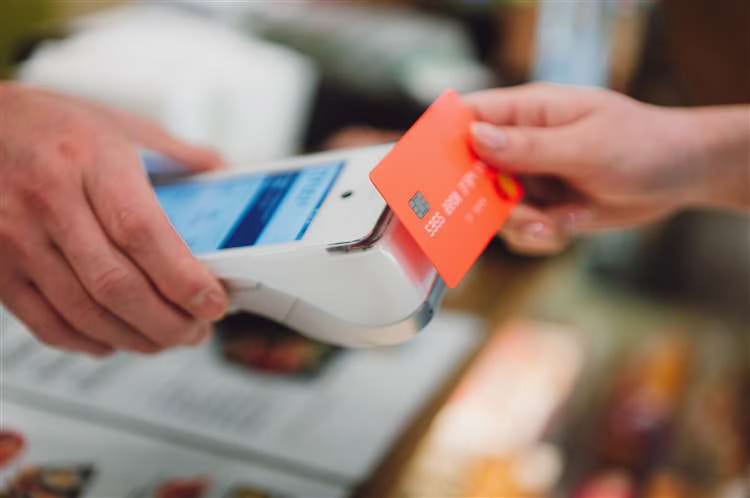Using blockchain to power real-time payments with Tassat; do we still need cash?
Why some banks are betting on blockchain to deliver real-time payments
Many of us in Europe are recovering from the latest edition of Money20/20 Europe, which was held in Amsterdam the past week. I’m going to write more about Money20/20 in the coming days, but today’s post covers a different set of topics entirely.
In part one of this newsletter, I speak to Glendy Kam, a product leader pioneering private blockchain solutions for banks and other enterprise-grade clients.
A few years back, it felt like blockchain was marketed as the solution for everything. Yet new technology is always an enabler, not a panacea. Today, the blockchain hype has died down, and now we can see the real-world applications more clearly. The technology powers many use cases, including crypto exchanges and stablecoins. In the case of Tassat, blockchain technology powers real-time payments within and between banks and other financial institutions.
In the interview Glendy mentions a permissioned blockchain, which can be contrasted with a public blockchain, such as that which Bitcoin runs on. With a public blockchain, anyone can see everything as it’s completely open. With a permissioned, also known as a private blockchain, only pre-approved participants can join. Transactions are only visible to members of the network, which is beneficial from a compliance perspective and particularly important for banks.
In part two of this newsletter, we’ll take a look at recent power outages, including a major one that hit Spain and Portugal, and ask what are the risks of a cashless society. In reality, despite the growing use of cards and QR codes for payments, do we still need cash?
Q&A with Glendy Kam from Tassat
Following Money20/20 Asia, I spoke to Glendy Kam, Chief Product Officer at Tassat.
Prior to joining Tassat, Kam held various positions at JPMorgan, where she played a key role in launching the bank's API pilot programme and the first Real-Time Payment (RTP) API as part of JPMorgan's blockchain initiative Onyx (now known as Kinexys).

At Money20/20 in Bangkok, you spoke on the panel "How AI, Blockchain, and Machine Learning Are Redefining Banking". How would you summarise the key takeaways or themes that emerged from that discussion?
The main takeaway was that the convergence of AI, blockchain, and machine learning is actively transforming the way banks operate, particularly in Asia.
What emerged clearly is how the intersection of these technologies is enabling smarter, more secure, and real-time financial systems. Private, permissioned blockchains are laying the foundation for auditable and immutable transaction layers, while AI and machine learning are being layered on top to detect anomalies, automate compliance, and optimize liquidity and credit risk in real time.
This is especially impactful in sectors where timing and transparency are critical, like healthcare, B2B payments, and FX trading. Blockchain, especially in a private, enterprise-grade format, is enabling instant settlement and trust across institutional networks. The group also emphasized that the real opportunity lies in building compliant, cross-border digital ecosystems, while the greatest risks ahead relate to regulatory complexity, not the tech itself.
How have you found it, and what has been the biggest surprise, moving from building products inside a bank to building products for banks?
Inside a bank, you're often navigating complex systems, owned by multiple groups, and long decision cycles. Now, building for banks, we have the opportunity to move faster and take a broader view of solving industry-wide challenges. The biggest surprise has been how ready many institutions are to adopt new infrastructure and technologies, especially when it's secure, compliant, and solves a real pain point like settlement speed or transparency.
While banks have significantly more financial resources, the core challenge remains the same: building products that ultimately deliver meaningful benefits to their customers.
How will technology such as AI, blockchain, and machine learning help define the next era of financial infrastructure globally?
AI, blockchain, and machine learning are converging to create a more efficient, transparent, and resilient financial infrastructure.
This technology reduces friction in areas like cross-border payments, treasury management, and trade finance, while minimizing counterparty risk. Unlike traditional architectures constrained by business hours, intermediaries, and manual processes, private, permissioned blockchains enable 24/7 transaction capabilities with built-in compliance, auditability, and programmable automation through smart contracts.
The real value emerges at the intersection of these technologies, where integration minimizes counterparty risk and operational delays. Together, these technologies are laying the groundwork for a financial system that is always on, data-driven, and more resilient to a new global standard for how financial services are delivered and trusted.
Are there any specific real-world implementations or pilot programs that demonstrate the potential of these technologies to transform banking, payments, and capital markets?
We're already seeing real-world examples of how these technologies are reshaping financial infrastructure. Tassat's blockchain infrastructure has processed over $2.5 trillion in real-time transactions to date, powering everything from B2B payments and treasury workflows to sector-specific applications like healthcare claims automation.
Our recent collaboration with an A.I.-driven HealthTech company highlights how blockchain and A.I. can streamline healthcare claims processing, reducing delays, errors, and administrative overhead. Similarly, our work with a leading FX provider demonstrates how institutions can use blockchain to achieve real-time settlement and generate yield on idle balances. These use cases show that the impact of AI, blockchain, and machine learning extends well beyond banking, driving transformation across payments, capital markets, and adjacent industries.
Despite the promise of real-time payments, widespread adoption in the US has been slow, as many banks are not connected to Real-Times Payments (RTP) or Fed Now. Can the emerging technology that Tassat offers help bridge this gap?
Despite growing demand for real-time payments, much of the U.S. banking system still relies on infrastructure and processes not designed for 24/7 settlement, resulting in limited availability and T+1 or T+2 delays. One of the key challenges isn't just technology — it's the operational changes required within banks to adopt real-time payments, from risk management and liquidity planning to compliance workflows.
Tassat's private blockchain enables 24/7 real-time settlement within a permissioned network, allowing not just banks, but also corporates, asset managers, and exchanges to transact securely and instantly. Through Lynq, the yield-bearing settlement network powered by Tassat, institutions can settle transactions instantly while earning intraday yield, showing that real-time finance can be both compliant and operational today. An example of a Lynq partner is U.S. Bank, which is the fifth largest bank in the US by assets.
How do you balance innovation with compliance?
At Tassat, we believe innovation and compliance have to go hand in hand. That's why our blockchain infrastructure is built as a private, permissioned system with compliance embedded at the core. Every participant on the network is vetted, and all transactions are fully auditable with clear data trails. Whether we're working with a bank, a healthcare provider, or a digital asset platform, we ensure our partners can adopt innovative tools without compromising on regulatory trust or operational oversight.
The biggest barriers holding back the adoption of AI and blockchain for banks at this time is regulatory uncertainty. For blockchain, especially in the U.S., even though we are seeing positive movement in the regulatory environment, there's still a lack of clear guidance on how financial institutions can use the technology in a compliant way, particularly when it comes to settlement, custody, and digital asset classification
A core challenge for regulators is walking the fine line between protecting consumers and fostering innovation. Without clear, consistent rules, banks risk moving too slowly—or not at all. What's needed is a regulatory approach that provides guardrails against undue risk, misinformation, and exploitation, while still giving banks the room to test and adopt new solutions safely and responsibly. - Glendy Kam
Are there any regulatory developments on the horizon that will make a difference to the adoption of emerging technologies for banks and other institutions?
Regulatory developments are starting to support broader blockchain adoption, especially as governments recognize its potential for real-time, secure settlement.
In the U.S., a significant shift came with the OCC, FRB, and FDIC recently rescinding prior guidance that required banks to seek explicit approval before engaging with blockchain technologies. This removes the uncertainties and signals a more open stance toward innovation in financial infrastructure.
Additionally, the recent bipartisan advancement of a major crypto regulation bill in the Senate marks a critical step toward providing clearer federal oversight and definitions for digital assets. If enacted, it could give banks and other institutions the regulatory certainty they need to deepen their involvement in blockchain-based activities.
Europe's Markets in Crypto-Assets (MiCA) regulation is providing legal clarity for digital assets, making it easier for institutions to engage in blockchain-based activity across borders. Meanwhile, the UK's support for fund tokenization is another step toward institutional blockchain adoption. These changes are helping shift blockchain from a compliance concern to a strategic enabler.
What's your vision for the short, medium, and long-term?
Our focus now is on expanding the adoption of Tassat's private blockchain across more institutions and sectors where real-time settlement can deliver immediate value.
We're building out new product offerings and scaling partnerships, like our recent work in Lynq, to serve a broader range of asset classes and geographies. Our vision is to help define the next generation of financial infrastructure, one where trusted, permissioned networks power continuous, compliant, and data-rich financial interactions across the globe.
Do we still need cash?
These days, cashless is a word that we hear more and more.
It’s a word that has different meanings in different places. In the UK, cashless usually means a store will expect you to pay with contactless (tap to pay), and cash payment won’t be an option.

Last year, in Malaysia, I encountered the term cashless, but this time, it didn’t mean card payments, but only QR code payments. While at a cafe in the northern region of Penang, I could only pay by scanning a QR code. As a foreigner, this was impossible. I couldn’t get the local app required by the QR code system. Grudgingly the cafe did eventually accept my cash.
There are benefits for businesses going cashless. Of course, some fees are paid when accepting cards, but you lose the need to take cash to a bank at the end of day. Beyond eliminating cash-related security risks, cashless payments also integrate into a wider suite of business solutions, which can make business owners’ lives easier.

Yet power outages can severely disrupt cashless payments. On Monday, April 28th, Spain and parts of Portugal went without power for more than half a day. Some estimates are that economic activity fell to 55% of that of a normal day. Card payment machines stopped working. Without power, ATMs didn’t work, and Spain’s domestic bank-to-bank payment system, called Bizum, was useless until 7 a.m. the next day (longer than the outage itself).
This event was a stark reminder of just how much cashless payment infrastructure relies on core infrastructure to function. It sounds obvious doesn’t it? But how often do we even consider how fragile our digital economy really is? Fintech consultant Martin Koderisch was caught up in it directly, as he told me:
I was recently in Spain during the major power outage, and the impact was immediate and surreal. All the traffic lights went dark, causing chaos on the roads, while public transport ground to a halt—no trains, no buses, nothing moving.
Credit card terminals stopped working, and electronic payments were impossible, leaving people scrambling for cash. Airports were thrown into disarray with flights delayed and no reliable updates. With phones down and no internet, even basic coordination became a challenge. For a few hours, it was absolute pandemonium—a stark glimpse of how deeply our daily lives depend on stable infrastructure.
The root cause of the Iberian power outage has yet to be confirmed, but it’s been a wake-up call to governments across Europe. Countries in the Nordics and Baltics see themselves as particularly vulnerable. Their economies are more reliant on cashless payments than much of the rest of Europe, and their geographic location on the eastern flank of NATO means perceived susceptibility to sabotage or other threats.
Finland, Sweden, Norway, Denmark, and Estonia are currently rolling out offline card payment systems. Usually, regulators and card schemes are not keen on offline card payments because it means an increase in risk. Offline payments cannot check if funds are available on a credit card ready to be spent. Such a check can only happen when connectivity is restored, so offline payments come with additional risk for any retailer. Yet central banks are working to permit and support a wider range of offline payments in scenarios such as sabotage or natural disasters.
In Sweden, many stores are now cashless. Discussions are underway to require key retailers such as large supermarkets and pharmacies to always accept cash. At the moment, they do accept cash, but as you can see from the video, the debate is whether this requirement should be enshrined in law.
Ultimately, everything in today’s world relies on power. When power fails, card terminals and mobile payment devices stop functioning, either immediately or once their batteries run out. Without electricity, internet connectivity that links payment systems to banks becomes inoperable.
Even though many of us hardly ever use cash day-to-day, cash may be worth keeping on hand for scenarios when power fails and digital payments go kaput. Whether we like it or not, when all else fails, there’s no replacement for cash. As I was writing this last paragraph, I looked in my wallet, and inevitably, I have no cash, at least no British Pounds. I have some cash in a foreign currency, but that won’t help me if the power goes out and my local store can only accept cash payments. Do you carry cash?
Note that views expressed on this Substack are my own and do not represent any other organisation. Also nothing I say should be taken as investment advice.



I'm in my late seventies and use many payment systems for their convenience like everbody else, but I've experienced extended power outages in many countries like Australia, South Africa and parts of Europe and SE Asia triggered by many different causes (eg, extreme weather events, failing ageing grids and so on) and cash has been my saviour. In my travels through remote parts of Africa and the Middle East, US$1 dollar and US$10 and US$20 bills have never failed to provide solutions to a lack of local currency. https://substack.com/@garymersham
Great post. This reinforces how fintech cloud architecture must now be compliance-aware, blockchain-compatible, and failure-resilient by design—especially as real-time payments and permissioned networks gain traction. Building for degraded modes, offline support, and embedded auditability is no longer optional—it’s strategic. Thank you for sharing.
Let me know if you want a version with hashtags or formatted for LinkedIn or X (Twitter).